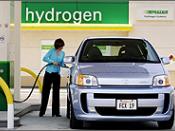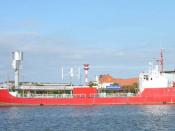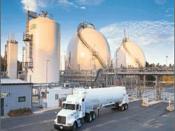Lighter Than Air: The Lie That is Hydrogen Power
On the night of May 6, 1937, the true face of hydrogen power was shown in the Hindenburg. The use of hydrogen to lift the massive airship was great, until the fatal collision, followed by the even greater flames that rained down from the exploding mass of hydrogen and metal. Hydrogen has long been known to be highly flammable and easily sparked. The use of hydrogen in the pas has caused great dangers and its use in the future will surely bring about more peril (Mappen, par. 1). Hydrogen power is held back due to its own dangers and should not be used as a fuel source.
Gasoline has been the fuel of the American society. Over the past years since the invention of the automobile, there have been more and more advances on the efficiency and cleanliness of gasoline. The most recent advancement in gasoline technology is the hybrid vehicle.
The recent combination of electricity with the combustion engine provides far less emissions along with providing greater fuel efficiency. Currently, Honda and Toyota are the only companies that provide hybrid vehicles to the general public, while the American car companies are planning on having their hybrid models available by 2005 (Kiley, par. 8-10). The hybrid vehicles are the first to be noted as "ultra-low emission" vehicles (Kiley, par. 4). Hybrids will be the start of a cleaner fuel economy, not dangerous hydrogen power.
As seen in the Hindenburg, hydrogen power is great, until its power is unleashed on the beholder. When the Hindenburg exploded, the hydrogen inside the airship fueled the flames that destroyed the airship. This could easily happen to any hydrogen-powered vehicle since there are multiple car collisions each day. This means that every hydrogen-powered car has the...


